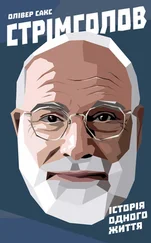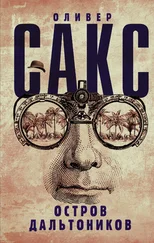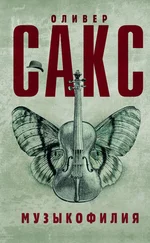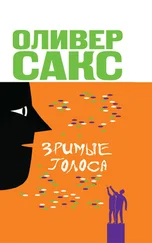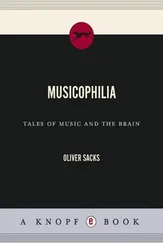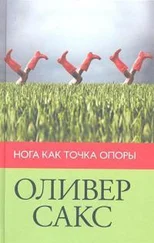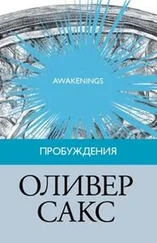When, early in 1918, a lady, unlike the stage Woman of Destiny in that she was neither tall, dark nor thin, was ushered, with an expression of equal good humour and resolution, into my office I immediately realized that a new planet had swum into my ken. Miss Annie Landau had been throughout the War exiled… from her beloved… girls’ school, and demanded to return to it immediately. To my miserable pleading that her school was in use as a military hospital she opposed a steely insistence: and very few minutes had elapsed before I had leased her the vast empty building known as the Abyssinian Palace. Miss Landau rapidly became very much more than the headmistress of the best Jewish girls’ school in Palestine. She was more British than the English… she was more Jewish than the Zionists – no answer from her telephone on the Sabbath, even by the servants. She had been friendly with the Turks and Arabs before the War; so that her generous hospitality was for many years almost the only neutral ground upon which British officials, ardent Zionists, Moslem Beys and Christian Effendis could meet on terms of mutual conviviality.
‘The compound forming the incense,’ the Talmud prescribed in almost stoichiometric terms,
… consisted of balm, onycha, galbanum and frankincense, in quantities weighing seventy manehs each; of myrrh, cassia, spikenard and saffron, each sixteen manehs by weight; of costus twelve, of aromatic bark three, and of cinnamon nine manehs; of lye obtained from a species of leek, nine kabs; of Cyprus wine three seahs and three kabs: though, if Cyprus wine was not procurable, old white wine might be used; of salt of Sodom the fourth part of a kab, and of the herb Maaleh Ashan a minute quantity. R. Nathan says, a minute quantity was also required of the odoriferous herb Cippath, that grew on the banks of the Jordan; if, however, one added honey to the mixture, he rendered the incense unfit for sacred use, while he who, in preparing it, omitted one of its necessary ingredients, was liable to the penalty of death.
Years later, when I read C.P. Snow, I found that his reaction to first seeing the periodic table was very similar to mine:
For the first time I saw a medley of haphazard facts fall into line and order. All the jumbles and recipes and hotchpotch of the inorganic chemistry of my boyhood seemed to fit themselves into the scheme before my eyes – as though one were standing beside a jungle and it suddenly transformed itself into a Dutch garden.
In his very first footnote, in the preface, Mendeleev spoke of ‘how contented, free, and joyous is life in the realm of science’ – and one could see, in every sentence, how true this was for him. The Principles grew like a living thing in Mendeleev’s lifetime, each edition larger, fuller, more mature than its predecessors, each filled with exuberating and spreading footnotes (footnotes which became so enormous that in the last editions they filled more pages than the text; indeed, some occupied nine-tenths of the page – I think my own love of footnotes, the excursions they allow, was partly determined by reading the Principles ).
Mendeleev was not the first to see some significance in the atomic weights of elements. When the atomic weights of the alkaline earth metals were established by Berzelius, Dobereiner was struck by the fact that the atomic weight of strontium was just midway between that of calcium and barium. Was this an accident, as Berzelius thought, or an indication of something important and general? Berzelius himself had just discovered selenium in 1817, and at once realized that (in terms of chemical properties) it ‘belonged’ between sulphur and tellurium. Dobereiner went further, and brought out a quantitative relationship too, for its atomic weight was just midway between theirs. And when lithium was discovered later that year (also in Berzelius’s kitchen lab), Dobereiner observed that it completed another triad, of alkali metals: lithium, sodium, and potassium. Feeling, moreover, that the gap in atomic weight between chlorine and iodine was too great, Dobereiner thought (as Davy had before him) that there must be a third element analogous to them, a halogen, with an atomic weight midway between theirs. (This element, bromine, was discovered a few years later.)
There were mixed reactions to Dobereiner’s ‘triads,’ with their implication of a correlation between atomic weight and chemical character. Berzelius and Davy were doubtful of the significance of such ‘numerology,’ as they saw it; but others were intrigued and wondered whether an obscure but fundamental significance was lurking in Dobereiner’s figures.
This, at least, is the accepted myth, and one that was later promulgated by Mendeleev himself, somewhat as Kekule was to describe his own discovery of the benzene ring years later, as the result of a dream of snakes biting their own tails. But if one looks at the actual table that Mendeleev sketched, one can see that it is full of transpositions, crossings-out, and calculations in the margins. It shows, in the most graphic way, the creative struggle for understanding which was going on in his mind. Mendeleev did not wake from his dream with all the answers in place, but, more interestingly, perhaps, woke with a sense of revelation, so that within hours he was able to solve many of the questions that had occupied him for years.
In an 1889 footnote – even his lectures had footnotes, at least in their printed versions – he added: ‘I foresee some more new elements, but not with the same certitude as before.’ Mendeleev was well aware of the gap between bismuth (with an atomic weight of 209) and thorium (232), and conceived that several elements must exist to fill it. He was most certain of the element immediately following bismuth – ’an element analogous to tellurium, which we may call dvi-tellurium.’ This element, polonium, was discovered by the Curies in 1898, and when finally isolated it had almost all the properties Mendeleev had predicted. (In 1899 Mendeleev visited the Curies in Paris and welcomed radium as his ‘eka-barium.’)
In the final edition of the Principles , Mendeleev made many other predictions – including two heavier analogs of manganese – an ‘eka-manganese’ with an atomic weight of around 99, and a ‘tri-manganese’ with an atomic weight of 188; sadly, he never saw these. ‘Tri-manganese’ – rhenium – was not discovered until 1925, the last of the naturally occurring elements to be found; while ‘eka-manganese,’ technetium, was the first new element to be artificially made, in 1937.
He also envisaged, by analogy, some elements following uranium.
It is a remarkable example of synchronicity that in the decade following the Karlsruhe conference there emerged not one but six such classifications, all completely independent of one another: de Chancourtois’s in France, Odling’s and Newlands’s, both in England, Lothar Meyer’s in Germany, Hinrichs’s in America, and finally Mendeleev’s in Russia, all pointing toward a periodic law.
De Chancourtois, a French mineralogist, was the first to devise such a classification, and in 1862 – just eighteen months after Karlsruhe – he inscribed the symbols of twenty-four elements spiraling around a vertical cylinder at heights proportional to their atomic weights, so that elements with similar properties fell one beneath another. Tellurium occupied the midpoint of the helix; hence he called it a ‘telluric screw,’ a vis tellurique . But the Comptes Rendu , when they came to publish his paper, managed – grotesquely – to omit the crucial illustration, and this, among other problems, put paid to the whole enterprise, causing de Chancourtois’s ideas to be ignored.
Читать дальше

